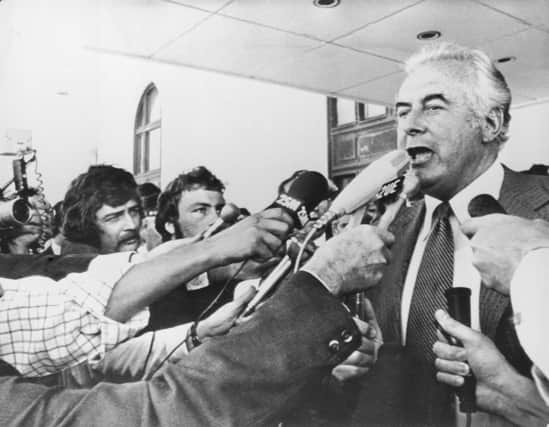This is my goodbye to journalism – Kevan Christie


“The only qualities essential for real success in journalism are rat-like cunning, a plausible manner and a little literary ability.” So said the great Australian journalist, novelist and adventurer, Murray Sayle.
I’m reflecting on these wise words, dear readers, as I prepare to leave journalism next week, finally getting out on good behaviour after spending 14 years detained at the pleasure of the Fourth Estate.
Advertisement
Hide AdAdvertisement
Hide AdI leave, to return to financial services, with the media industry under threat like never before which is what they told me when I left university as a fresh faced 37-year-old to take up my first job with the Newsflash agency in 2006. ‘Twas ever thus’.
Social media was in its infancy back then with Facebook and Twitter just getting started, the prominent players being Friends Reunited and Myspace which now seem like the silent movies before the advent of ‘talkies’.
I’ve had more good times than bad as a journo, although I prefer the term hack as it definitely suits me better and have had some great laughs and the occasional ‘squeaky bum’ times along the way.
It’s been a privilege to work with some lovely folk who I’m now proud to call my lifelong... former work colleagues.
I reflect on long summers spent in Fife, hot on the heels of such villains as the Kennoway cat poisoner, with a veteran photographer and Black Watch soldier who spent years in Northern Ireland at the height of the Troubles and knew which baker’s served the best pies.
I did numerous ‘death knocks’ with this guy before working for the Scotsman, including ringing the front door bell of a family on Christmas Day morning whose 11-year-old son had died of an asthma attack the night before. The father quite rightly wanted to deck me but the presence of the photographer saved me from the kicking I so richly deserved. I was following the newsdesk’s orders and the job was different back then, but not too proud of that one nevertheless.
Still at least I never had a dead mouse thrown at me on a doorstep in Methil like my esteemed colleague who considered this his worst moment – until his beloved Berwick Rangers fell out of the Scottish football league.
But enough of the war stories. So, what’s changed in 14 years? Well, the answer for me is everything and nothing.
Advertisement
Hide AdAdvertisement
Hide AdThe art of storytelling is basically the same and will never change, no matter how much the technology evolves, it goes back to the cave drawings and a genuine interest in other people and the ability to make them tell you stuff that can’t be taught in media courses.
I was surprised as to the extent journalism was like the art of selling, only this time you’re persuading people to part with personal details rather than their hard-earned cash.
Sure the platforms for delivery have changed but I’m always amazed by the unbridled pleasure young digital journalists attain when they see their names in print for the first time.
It’s a tangible record of their work and I recognise the buzz they get from it.
I refuse to believe that print is dead and anyway who wants to take a computer to the toilet?
As a former tabloid hack, we were told to write so your granny understands it but let’s change that to grandperson as it now sounds a bit sexist.
People are nosey and genuinely interested in the misfortune of others as it gives them a sense of both – “look what’s happened to them and thank goodness that’s not happened to me”.
When I signed for the Record in 2006, I remember being told not to worry about the writing as they had plenty of people who can write – just get stories.
Advertisement
Hide AdAdvertisement
Hide AdI took a circuitous route to journalism, having been asked to leave school at 16 and ended up working at Monteith’s, the builder’s merchant behind the Dunbar End at Easter Road Stadium.
Although I only lasted six months before getting sacked, I showed the first glimpses of ‘rat-like cunning’ by selling my nextdoor neighbour, a plumber, bags of cement on the side.
Years thereafter spent in Standard Life and various other insurance companies and banking institutions finally took me to Edinburgh Napier University as an immature journalism student.
Anyway, I digress. I would still recommend a career in journalism to anyone as, trust me, it beats working in the real world and it definitely ticks the box I set myself of finding a job I loved doing so it doesn’t feel like work.
But I’m getting on a bit now and have to find new ways to pay for the army of staff who tend to the Southfork Estate at Crossgates – plus that Dobbies tab I’ve run up won’t pay itself.
Comments
Want to join the conversation? Please or to comment on this article.